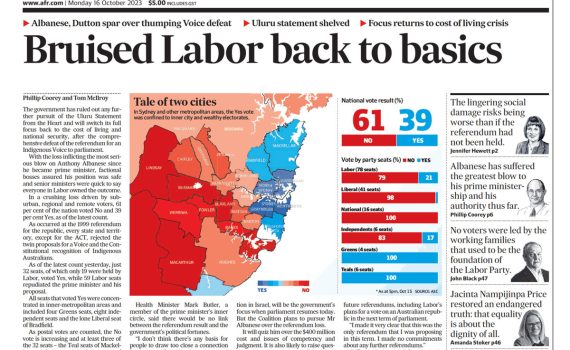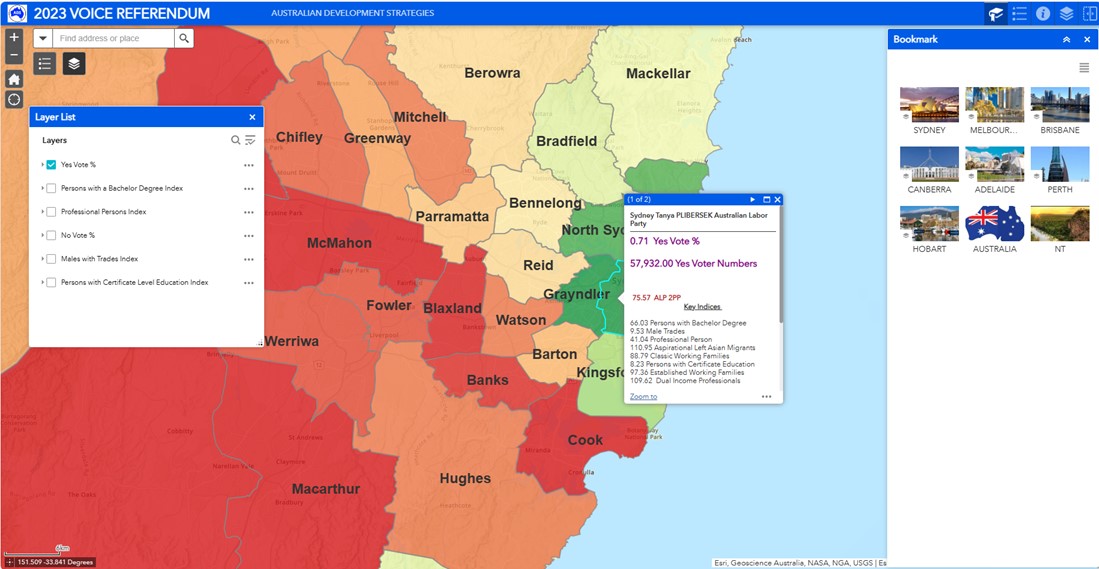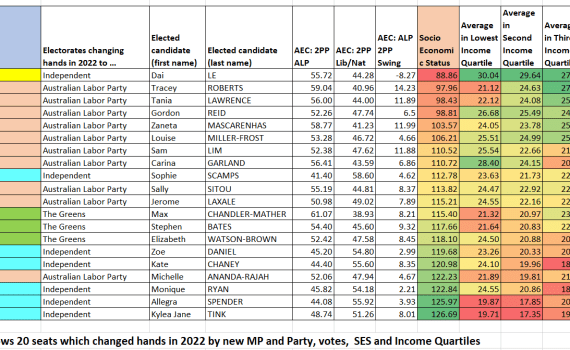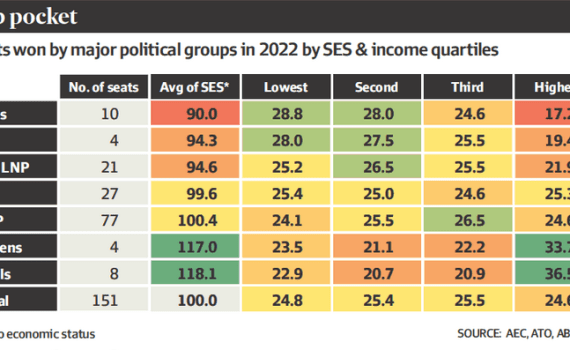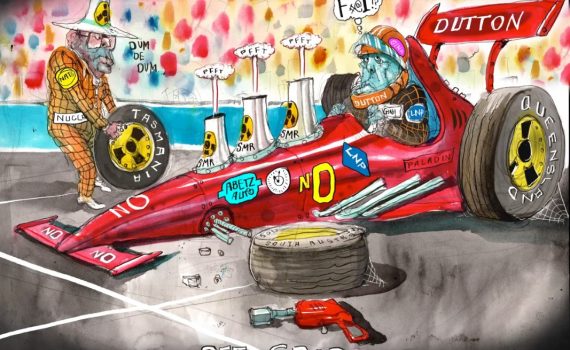Category:Election Profiles
Tags : election strategy
I have an election strategy piece in the Australian Financial Review special New Year’s Edition for 2024.
For AFR subscribers, the link can be found here: https://www.afr.com/politics/federal/odds-for-2024-point-to-another-close-labor-win-in-2025-20231212-p5eqv2
The thrust of the AFR article is that both leaders of the two major parties seem to be talking to the converted demographics which already dominate their own power bases.
While PM Anthony Albanese appears to be focussed on fighting off challenges in his own seat from the affluent inner-city Green Left, Opposition Leader Peter Dutton appears to be focussed on holding off challenges to the National Party and the LNP from the populist right of One Nation and Palmer United. Hence the ALP is losing support in the outer suburbs over cost of living issues and the Coalition is not winning back the support it lost at the last election from higher SES professionals, particularly professional women.
Election campaigns across Australia’s single-member constituencies are about winning a majority of votes in a majority of seats. This requires a combined demographic and spatial strategy.
I worked on this strategy for the ALP leading up the 1983 election for then Opposition Leader Bill Hayden, after I wrote to him, pointing out that his 1980 campaign had won him won plenty of votes, but not in the seats that could have been won. Bill was kind enough to let me publish these research papers which you can now find at https://www.elaborate.net.au/category/election-profiles/

Let me illustrate the importance of a combined demographic and spatial strategy with the Table above, which didn’t appear in the AFR story. The table shows 20 seats which changed hands in 2022, by their new MP and Party, their 2PP votes and swing, their SES and Income quartiles.
(Please note I am using here the official Australian Electoral Commission post-election allocation of preferences between the major parties and use the headings AEC: 2PP ALP, AEC: 2PP Lib/Nat and AEC: ALP 2PP Swing. This 2PP count works by assuming the ALP and the Coalition candidates polled enough primary votes to remain in the count, as 2022 preferences were distributed. Hence the ALP is shown as ‘winning’ the 2PP in Fowler, whereas the seat was in fact lost by the ALP to popular Independent Dai Le. Similarly, the table shows the Coalition ‘winning’ the 2PP vote in all formerly safe Liberal seats which were actually won by the Teals.)
The table shows that:
The only low SES seat that changed hands in 2022 was Fowler, lost by the ALP to an Independent. The only other ALP loss was the high SES seat of Griffith, lost to a Green.
The ALP tended to win Liberal seats in the medium SES range and these were mainly in WA where the swing was State based.
The ALP, Greens and Teals tended to win the seats in the higher SES ranges.
If it continues its failed 2022 strategy of targeting lower SES seats, the Coalition stands no chance in 2025 of regaining middle class and professional seats which it lost in 2022. Furthermore, these former safe Lib seats lost to Teals are evolving into marginal ALP seats.
For the ALP, the primary vote challenge remains the atrophying of its support among working families chasing well paid blue collar jobs. The West Australian Government did the heavy lifting for Labor in 2022 with this demographic and showed Federal Labor how it could be done in the other states.
The demographic target for both parties in 2025 can be found among younger, aspirational families, making a go of life and its challenges in the middle to outer suburbs. Increasingly, as Australia’s birth rate falls, this demographic is becoming dominated by Asian born parents who are currently voting Left, but consuming Right. They are supporting Labor electorally, but choosing private health insurance and non-government schools for their families.
This is a politically transactional demographic interested in opportunities and outcomes.
To have a chance at winning a narrow majority of seats in 2025, the major parties need the support of this demographic.
To win a working majority of seats, the major parties also need to regain some of their lost demographics – working families for Labor and professional women for the Coalition.
Leaders need to focus not just on voters they think they can win, but on voters who are also living in the seats that can be won.
